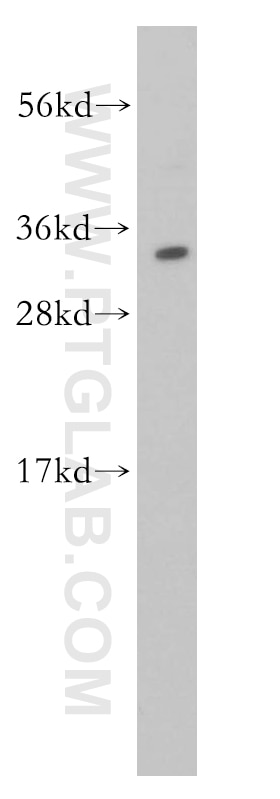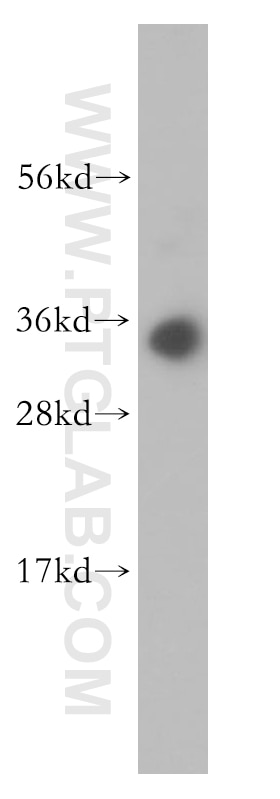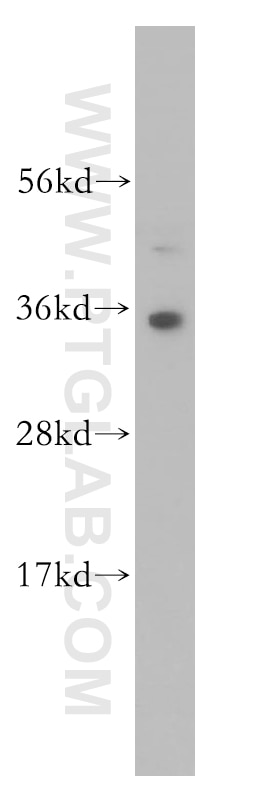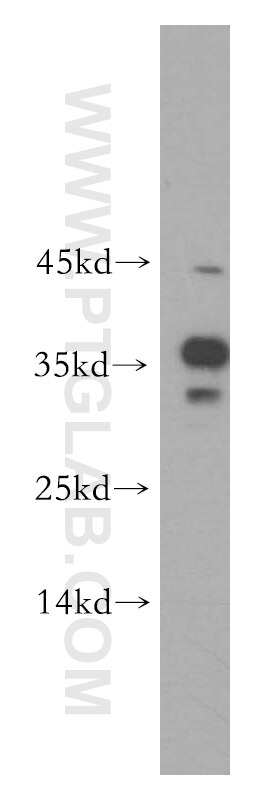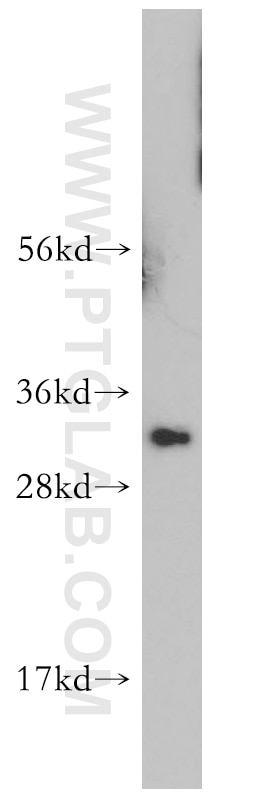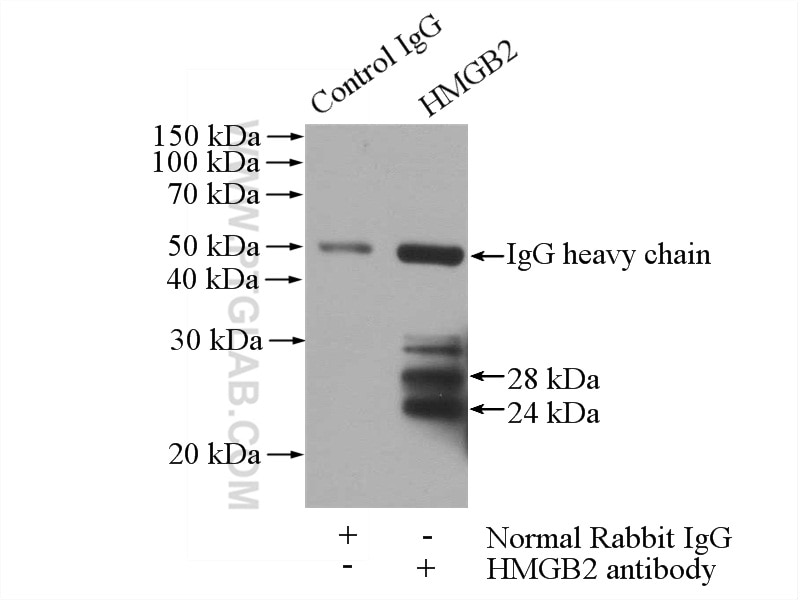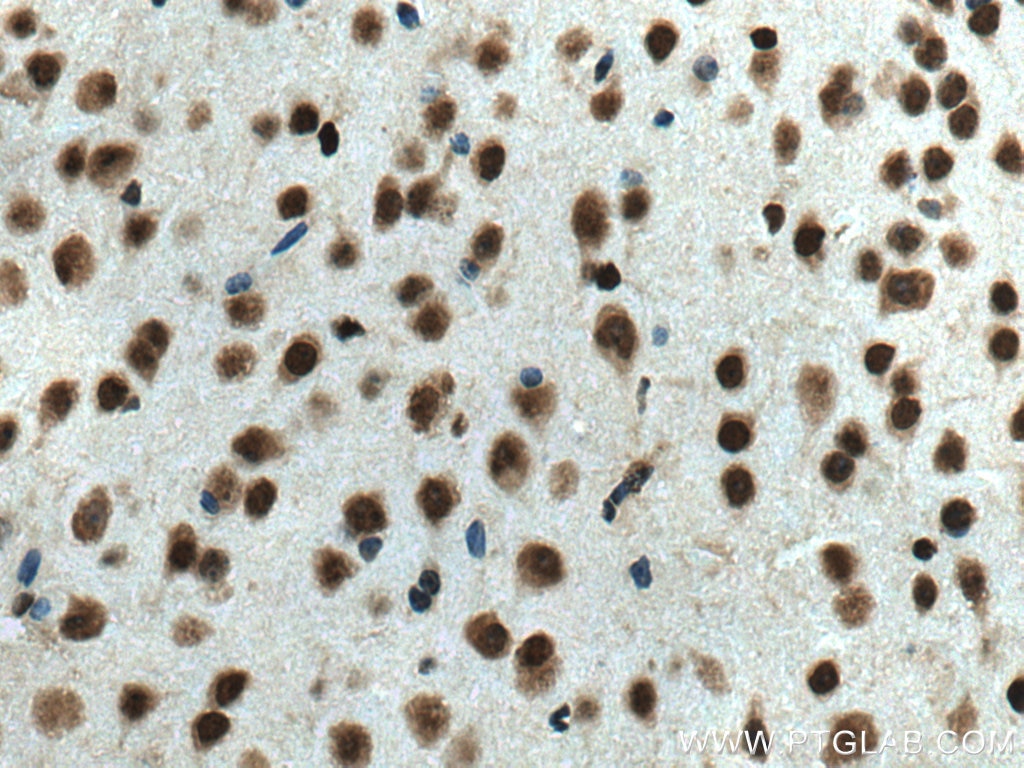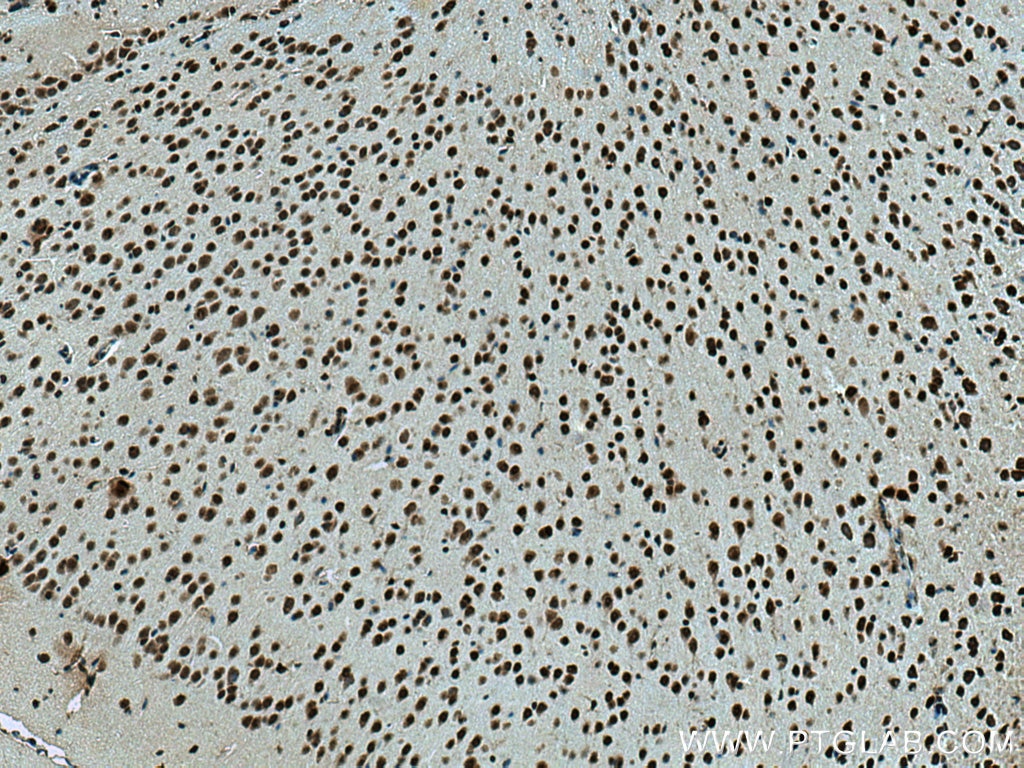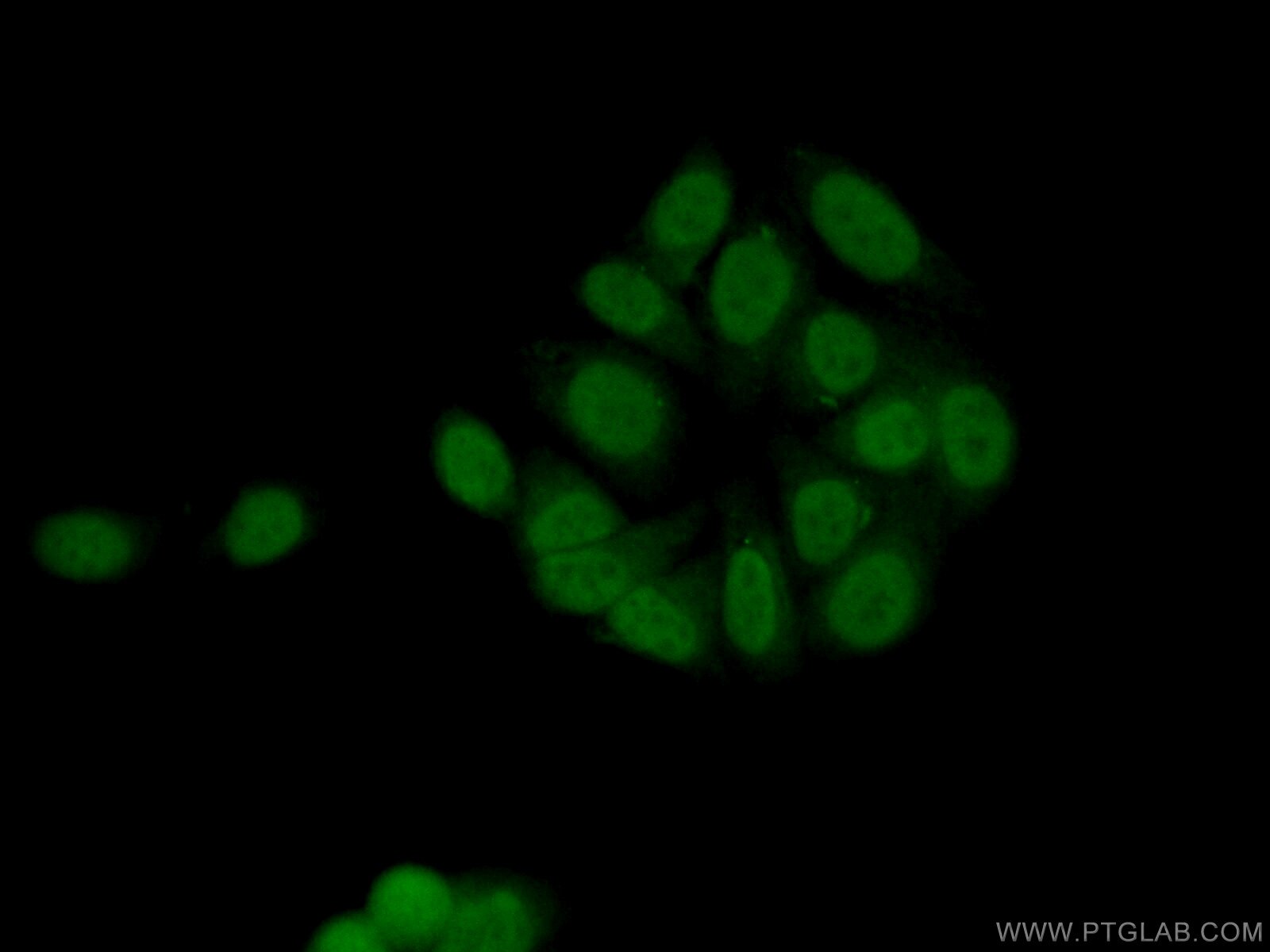- Phare
- Validé par KD/KO
Anticorps Polyclonal de lapin anti-HMGB2
HMGB2 Polyclonal Antibody for WB, IP, IF, ELISA
Hôte / Isotype
Lapin / IgG
Réactivité testée
Humain, rat, souris
Applications
WB, IF/ICC, IP, ELISA
Conjugaison
Non conjugué
N° de cat : 14597-1-AP
Synonymes
Galerie de données de validation
Applications testées
| Résultats positifs en WB | cellules Jurkat, cellules HEK-293, cellules HL-60, cellules K-562, tissu de cervelet humain |
| Résultats positifs en IP | cellules HEK-293 |
| Résultats positifs en IHC | tissu cérébral de souris, il est suggéré de démasquer l'antigène avec un tampon de TE buffer pH 9.0; (*) À défaut, 'le démasquage de l'antigène peut être 'effectué avec un tampon citrate pH 6,0. |
| Résultats positifs en IF/ICC | cellules HepG2, |
Dilution recommandée
| Application | Dilution |
|---|---|
| Western Blot (WB) | WB : 1:500-1:3000 |
| Immunoprécipitation (IP) | IP : 0.5-4.0 ug for 1.0-3.0 mg of total protein lysate |
| Immunohistochimie (IHC) | IHC : 1:50-1:500 |
| Immunofluorescence (IF)/ICC | IF/ICC : 1:50-1:500 |
| It is recommended that this reagent should be titrated in each testing system to obtain optimal results. | |
| Sample-dependent, check data in validation data gallery | |
Applications publiées
| KD/KO | See 4 publications below |
| WB | See 12 publications below |
| IF | See 2 publications below |
Informations sur le produit
14597-1-AP cible HMGB2 dans les applications de WB, IF/ICC, IP, ELISA et montre une réactivité avec des échantillons Humain, rat, souris
| Réactivité | Humain, rat, souris |
| Réactivité citée | rat, Humain, souris |
| Hôte / Isotype | Lapin / IgG |
| Clonalité | Polyclonal |
| Type | Anticorps |
| Immunogène | HMGB2 Protéine recombinante Ag6135 |
| Nom complet | high-mobility group box 2 |
| Masse moléculaire calculée | 24 kDa |
| Poids moléculaire observé | 33-35 kDa |
| Numéro d’acquisition GenBank | BC001063 |
| Symbole du gène | HMGB2 |
| Identification du gène (NCBI) | 3148 |
| Conjugaison | Non conjugué |
| Forme | Liquide |
| Méthode de purification | Purification par affinité contre l'antigène |
| Tampon de stockage | PBS avec azoture de sodium à 0,02 % et glycérol à 50 % pH 7,3 |
| Conditions de stockage | Stocker à -20°C. Stable pendant un an après l'expédition. L'aliquotage n'est pas nécessaire pour le stockage à -20oC Les 20ul contiennent 0,1% de BSA. |
Informations générales
High mobility group protein B2 (HMGB2) belongs to a family of highly conserved proteins that contain HMG box domains (11246022,14871457). All three family members (HMGB1, HMGB2, and HMGB3) contain two HMG box domains and a C-terminal acidic domain. HMGB1 is a widely expressed and highly abundant protein (14871457). HMGB2 is widely expressed during embryonic development, but it is restricted to lymphoid organs and testis in adult animals (11262228). HMGB3 is only expressed during embryogenesis (9598312). While expression varies, the biochemical properties of the different family members may be indistinguishable. The HMG box domains facilitate the binding of HMGB proteins to the minor groove of DNA, which results in local bending of the DNA double helix . HMGB proteins are recruited by and help facilitate the assembly of site-specific DNA binding proteins to their cognate binding sites in chromatin. For example, HMGB1 and HMGB2 facilitate the binding of Hox proteins, Oct proteins, p53, Rel proteins, and steroid hormone receptor proteins to their target gene promoters (11246022,14871457). Furthermore, HMGB2 interacts with RAG1 to facilitate RAG complex binding to the recombinant signal sequence (RSS) and stimulate DNA-bending and subsequent VDJ cleavage at antigen receptor genes (19317908 ,10490593). In addition to their functions in the nucleus, HMGB proteins play a significant role in extracellular signaling associated with inflammation. HMGB2 is secreted by myeloid cells and promotes proliferation and migration of endothelial cells by binding to the receptor for advanced glycation endproducts (RAGE) (19811285 ). Research studies have shown that HMGB2 overexpression in hepatocellular carcinoma is associated with poor prognosis and shorter survival time (20851854).This antibody recognizes the phosphorylation form of HMGB2 protein. The calculated molecular weight of HMGB2 is 24 kDa, but the post-modifiction of HMGB2 is about 33-35 kDa. (PMID: 18218727)
Protocole
| Product Specific Protocols | |
|---|---|
| WB protocol for HMGB2 antibody 14597-1-AP | Download protocol |
| IHC protocol for HMGB2 antibody 14597-1-AP | Download protocol |
| IF protocol for HMGB2 antibody 14597-1-AP | Download protocol |
| IP protocol for HMGB2 antibody 14597-1-AP | Download protocol |
| Standard Protocols | |
|---|---|
| Click here to view our Standard Protocols |
Publications
| Species | Application | Title |
|---|---|---|
Front Immunol Single-cell protein activity analysis reveals a novel subpopulation of chondrocytes and the corresponding key master regulator proteins associated with anti-senescence and OA progression | ||
Ecotoxicol Environ Saf Proteomic analysis reveals that cigarette smoke exposure diminishes ovarian reserve in mice by disrupting the CREB1-mediated ovarian granulosa cell proliferation-apoptosis balance | ||
Environ Pollut Fluoride-induced unrestored arrest during haploid period of spermatogenesis via the regulation of DDX25 in rats. | ||
Chemosphere Arsenic influences spermatogenesis by disorganizing the elongation of spermatids in adult male mice. | ||
Cancer Gene Ther The LncRNA RP11-301G19.1/miR-582-5p/HMGB2 axis modulates the proliferation and apoptosis of multiple myeloma cancer cells via the PI3K/AKT signalling pathway. | ||
Cell Commun Signal HMGB2 is associated with malignancy and regulates Warburg effect by targeting LDHB and FBP1 in breast cancer.
|
